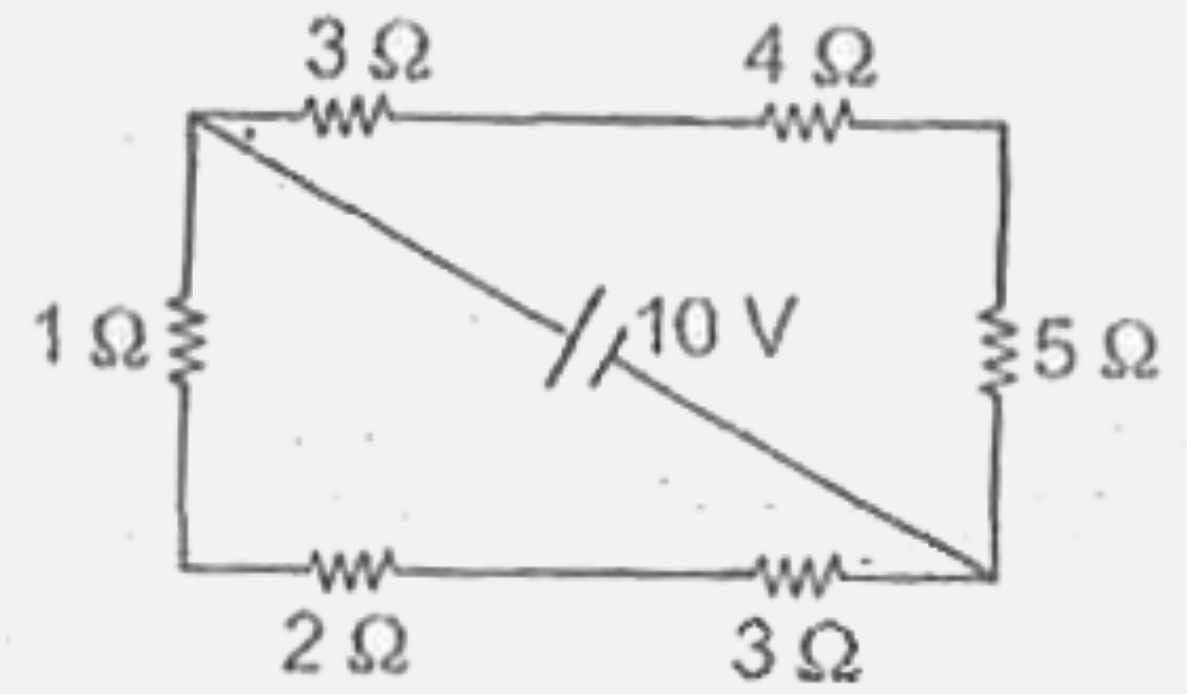A cell is sending current in an external circuit. How does the terminal voltage compare with the e.m.f. of the cell ?
To understand how the terminal voltage compares with the e.m.f. (electromotive force) of a cell when it is sending current in an external circuit, we can follow these steps:
Step 1: Define the Terms
- E.M.F. of the Cell (Vemf): This is the maximum potential difference provided by the cell when no current is flowing through the circuit. It represents the energy supplied by the cell per unit charge.
- Terminal Voltage (Vt): This is the potential difference across the terminals of the cell when current is flowing. It is the voltage available to the external circuit.
Step 2: Understand the Circuit
- Consider a simple circuit where a cell is connected to a load (resistor) through two points, A and B. The cell has an internal resistance (r) and is providing current (I) to the load.
- The terminal voltage (Vt) is measured across the load, while the e.m.f. (Vemf) is the potential difference across the terminals of the cell when no current is flowing.
Step 3: Relate E.M.F., Terminal Voltage, and Internal Resistance
- When the cell is supplying current, the terminal voltage can be expressed as:
Vt=Vemf−I⋅r
where:
- I is the current flowing through the circuit,
- r is the internal resistance of the cell.
Step 4: Conclusion
- From the above relationship, we can see that the terminal voltage (Vt) is always less than the e.m.f. (Vemf) when current is flowing through the circuit. This is because a portion of the e.m.f. is dropped across the internal resistance of the cell.
Final Statement
- Therefore, when a cell is sending current in an external circuit, the terminal voltage is less than the e.m.f. of the cell.
---
- E.M.F. of the Cell (Vemf): This is the maximum potential difference provided by the cell when no current is flowing through the circuit. It represents the energy supplied by the cell per unit charge.
- Terminal Voltage (Vt): This is the potential difference across the terminals of the cell when current is flowing. It is the voltage available to the external circuit.
- Consider a simple circuit where a cell is connected to a load (resistor) through two points, A and B. The cell has an internal resistance (r) and is providing current (I) to the load.
- The terminal voltage (Vt) is measured across the load, while the e.m.f. (Vemf) is the potential difference across the terminals of the cell when no current is flowing.
- When the cell is supplying current, the terminal voltage can be expressed as:
Vt=Vemf−I⋅r
where:
- I is the current flowing through the circuit,
- r is the internal resistance of the cell.
- From the above relationship, we can see that the terminal voltage (Vt) is always less than the e.m.f. (Vemf) when current is flowing through the circuit. This is because a portion of the e.m.f. is dropped across the internal resistance of the cell.
- Therefore, when a cell is sending current in an external circuit, the terminal voltage is less than the e.m.f. of the cell.
Topper's Solved these Questions
Similar Questions
The diagram in Fig. shows a cell of e.m.f. ε=2 volt and internal resistance r = 1 ohm connected to an external resistance R = 4 ohm. The ammeter A measures the current in the circuit and the voltmeter V measures the terminal voltage across the cell. What will be the readings of the ammeter and voltmeter when
the key K is closed.

View SolutionThe diagram in Fig. shows a cell of e.m.f. ε=2 volt and internal resistance r = 1 ohm connected to an external resistance R = 4 ohm. The ammeter A measures the current in the circuit and the voltmeter V measures the terminal voltage across the cell. What will be the readings of the ammeter and voltmeter when
the key K is open

View Solution36 cells each of internal resistance 0.5Ω and emf 1.5 V each are used to send current through an external circuit of 2Ω resistance. Find the best mode of grouping them and the current through the external circuit.
View SolutionWhat is the relationship between potential difference across the terminals of a cell and emf of the cell ?
View SolutionA battery is made by joining m rows of identical cells in parallel. Each row consists of n cells joined in series. This battery sends a maximum current I in a given external resistor. Now the cells are so areaged that instead of m rows. N rows are joind in parallel and each row consists of m cells joined in series. Find the current through the same external resistor (Total number of cells which is equal to nm is connected )
View SolutionWhen a resistance of 2 ohm is connected across terminals of a cell, the current is 0.5A. When the resistance is increased to 5 ohm, the current is 0.25A The e.m.f. of the cell is
View SolutionTwo identical cells of emf 1.5 V each joined in paralllel provide supply to an external circuit consisting of two resistances of 7Ω each joined in parallel. A very high resistance voltmeter reads the terminal voltage of cells to be 1.4 V. Calculate the internal resistance of each cell.
View SolutionIn a mixed grouping of identical cells, five rows are connected in parallel and each row contains 10 cells. This combination sends a current I through an external resistance of 20Ω. if the emf and internal resistance of each cell is 1.5 V and 1Ω, respectively then find the value of I.
View SolutionIn the circuit shown , the current draw by the cell is

View SolutionExplain the meaning of the terms e.m.f., terminal voltage, and internal resistance of a cell.
View Solution

